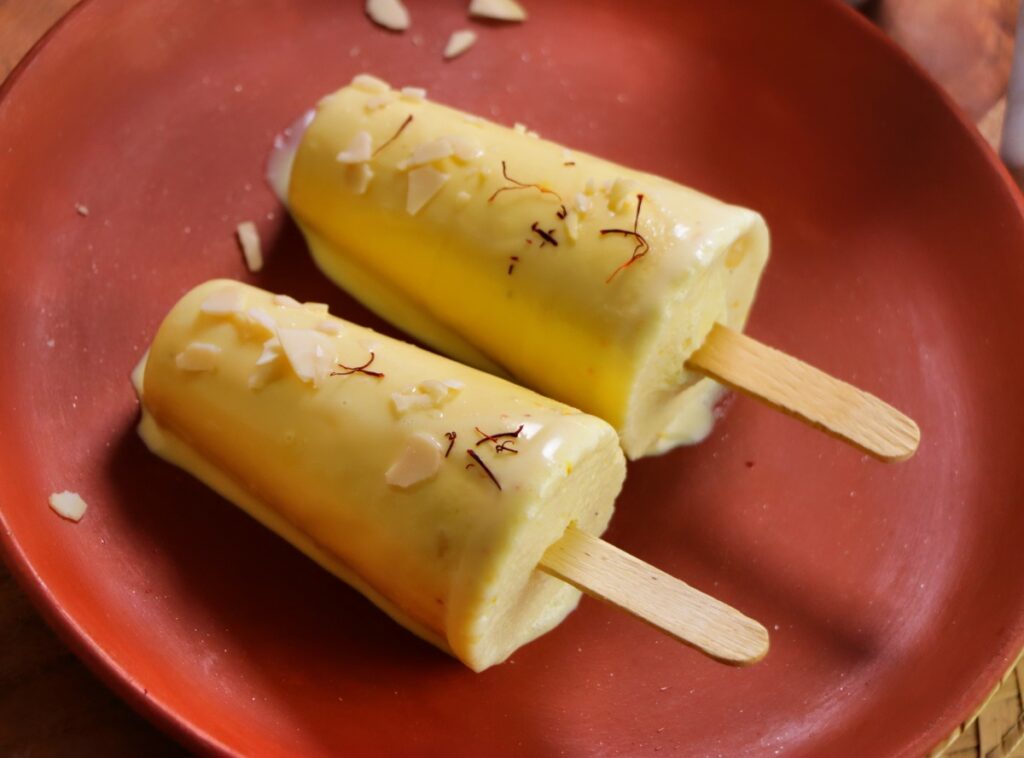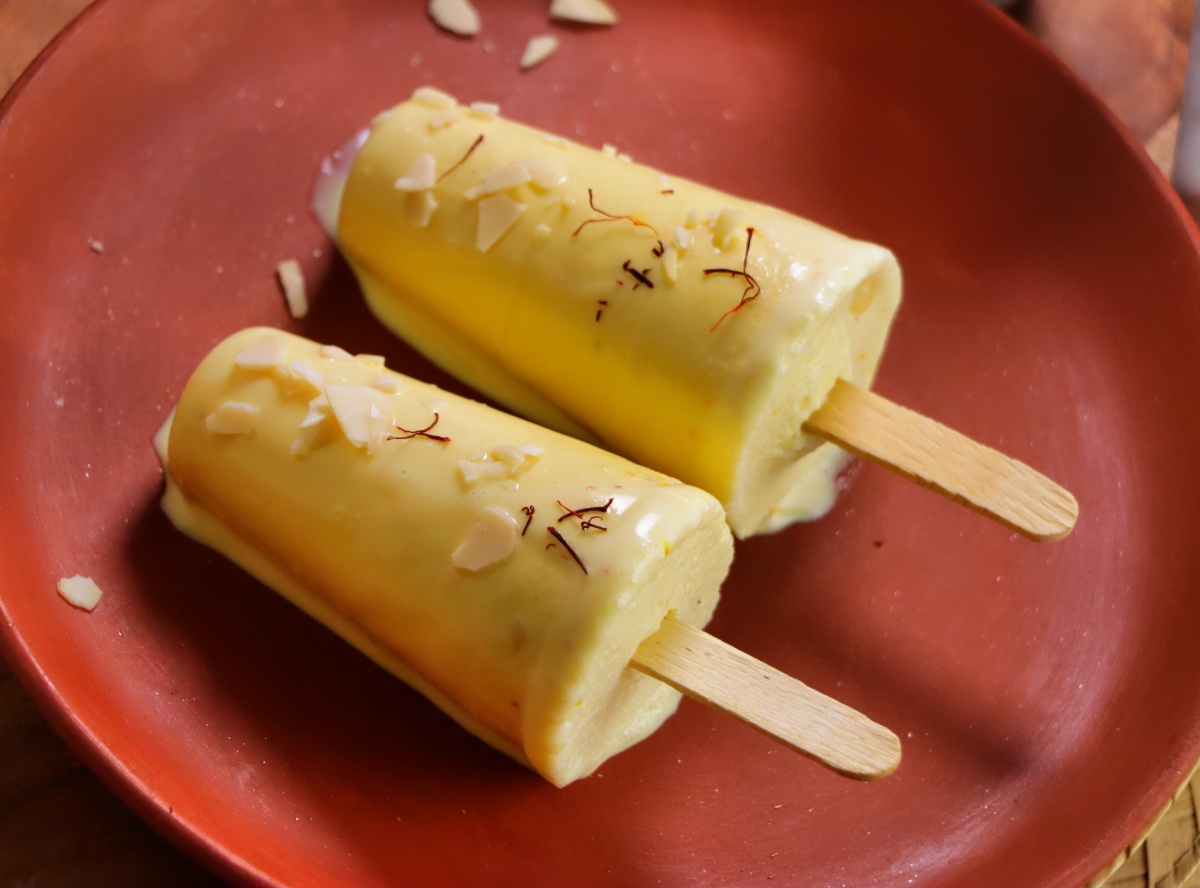By Aubaid Ahmad Akhoon
Kashmir, with its snow-capped peaks, shimmering lakes, and Mughal gardens, has always carried a reputation for unmatched beauty and cultural depth. Yet, amid the grandeur of its landscapes and the poetry of its history, another jewel quietly thrives—its culinary traditions. Kashmiri cuisine, best known to outsiders for the royal feast of Wazwan, also has a sweeter, humbler side that finds expression in desserts like the traditional malai kulfi. For generations, this frozen delicacy has been part of Kashmir’s food story, celebrated for its rich flavor and painstaking preparation. But today, the authenticity of Kashmiri kulfi faces a subtle yet serious challenge: the rise of quick-fix, custard-based imitations that masquerade as the real thing in street corners and roadside dhabas.
At its core, true Kashmiri malai kulfi is not just dessert—it is craft. It begins with fresh milk simmered for hours over a slow flame until it reduces to a thick, velvety consistency. This is no hurried recipe; it demands patience and devotion. Once condensed, the milk is infused with crushed cardamom, saffron strands, and generous handfuls of almonds or pistachios. The outcome is dense and creamy, each bite releasing layers of natural sweetness and aromatic warmth. It is designed to melt slowly, lingering on the palate, leaving behind a trail of nostalgia. Compare this with the custard-based variants flooding the market—light, airy, and often boosted with artificial flavors and preservatives. They may offer instant gratification but fail to capture the depth and integrity of the original. The difference is not subtle; it is glaring to anyone who has tasted both.
Discerning the real from the fake has, however, become a challenge. On Srinagar’s busy streets, amid the swirl of kebab smoke and the chatter of shoppers, kulfi sellers tout their versions with equal confidence. Many use custard powder to mimic creaminess, producing a dessert that melts quickly and leaves behind a synthetic aftertaste. The tragedy is that many young Kashmiris growing up on these counterfeits may never truly know the magic of authentic kulfi. That erosion of culinary memory is as worrying as the loss of any tradition.
Still, pockets of resistance remain—small but determined. In the downtown alleys of Srinagar, a few shops hold steadfast to the old ways. And occasionally, innovation steps in not to dilute but to strengthen authenticity. The popularity of such places reveals a deeper truth: Kashmir’s culinary strength lies not only in preserving recipes but in nurturing their spirit. Wazwan, with its dozens of dishes, has long been celebrated as a symbol of Kashmiri hospitality. But desserts like malai kulfi—humble, everyday luxuries—are equally vital in telling the region’s story. Each authentic bite is a reminder of how food connects past and present, memory and innovation. To lose that connection to shortcuts and imitations would be a quiet tragedy.
The good news is that authenticity can also travel. Shops like Salt & Spice have begun offering their kulfi in larger “bricks,” allowing families to take home more than a scoop, to store and share with relatives, and perhaps to serve on gatherings when Kashmir’s famed wazwan feast concludes. In those moments, the kulfi ceases to be just dessert; it becomes part of an inherited ritual, a way of binding generations around a shared taste.
Yet, the responsibility does not rest with shopkeepers alone. It rests with the public—the kulfi lovers, the food enthusiasts, the everyday buyers. By learning to distinguish texture, by questioning ingredients, by refusing to settle for custard powder shortcuts, consumers become custodians of authenticity. In a world increasingly driven by convenience, such choices are not small; they are decisive acts of preservation.

Kashmir’s culinary heritage deserves that defense. The valley’s food, like its music, craft, and poetry, is a reflection of resilience. Even under political upheaval and changing economies, the taste of saffron-laced milk simmered into kulfi has endured. It is more than dessert; it is continuity, comfort, and culture in frozen form. As Kashmir opens further to tourism and global exposure, its culinary treasures risk dilution in the name of modernity. But they also hold the power to astonish new palates if preserved in their true form.
To taste a real Kashmiri malai kulfi is to taste patience, heritage, and authenticity. To accept a counterfeit is to let go of a story told over centuries through kitchens and hearths. The choice, in the end, is ours. In celebrating and supporting authentic kulfi, we are not just indulging in a dessert—we are safeguarding a piece of Kashmir’s identity, ensuring that future generations can savor more than imitation, and taste the truth of a land where even the simplest of sweets carries the weight of tradition.
The views expressed in this article are solely those of the author and do not necessarily reflect the opinions or views of this newspaper. The author can be reached at [email protected]
